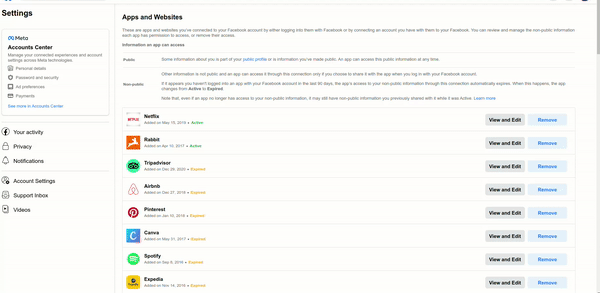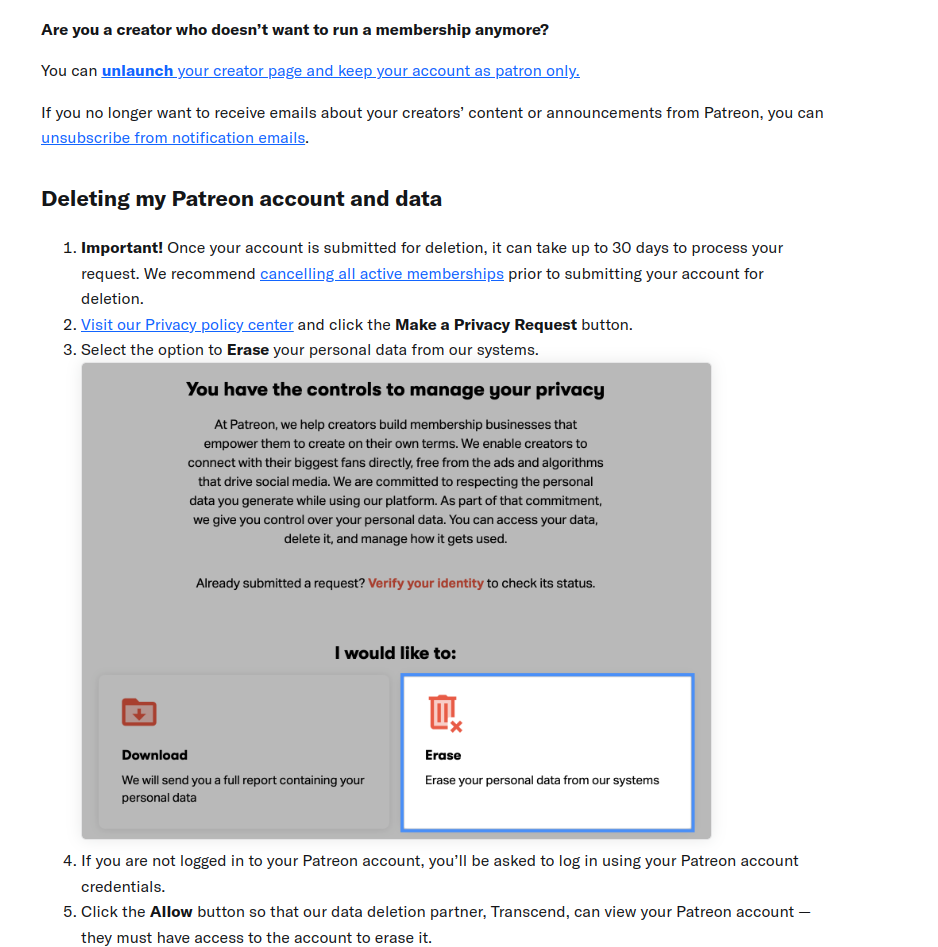How To Get Rid of Facebook Single Sign-On (SSO)
I had over 50+ websites and apps that were connected to my Facebook account. You probably will end up with no more than five services you want to keep, and make sure to change your login credentials.
Delete Apps and Websites That Access Your Facebook Info Through Sign-Up
Here is a quick guide on how to know what apps and websites use your Facebook information and credentials for log-in purposes.
Taking Responsibility For Your Digital Footprint
This post is part of a series of posts I will write to help you regain your privacy, own your data, support open source, and self-host. I plan to delete most of my social media accounts and be more conscious of understanding my digital presence and my responsibility. I am on this journey with you, remember subscribe if you want to keep up to date with this series.
Some Reasons & Solutions
Using an SSO service like Facebook and Google represents a single point of possible failure in your privacy and digital security. If one has access to that particular SSO, well, he will have access to all other related services. More importantly, I don't trust them anymore.
The simplest solution is to use unique passwords for each system and store them out of devices with internet access.
On Facebook
First, let's check how many apps and websites were connected to my Facebook account.

I had no idea that I had over 50+ websites and apps connected to my Facebook account. After checking this, you will likely end up with no more than five services you want to keep. Make sure to change your login credentials and disconnect them from Facebook.
8 Steps To Get Rid Of Facebook SSO
I do not have the Facebook App on my phone, so these instructions are solely for desktops.
Go to:
- Profile Picture
- Settings & Privacy
- Settings
- Left side panel, See more in Account Center
- Passwords and security
- Go to the end of the page and click on Apps and Websites
- Select your account
- Then, select each website or app and click to remove any unwanted.
Out of Facebook
Deleting Your Main Accounts and Asking for Data Removal
Before you delete some of these websites or apps, I recommend going to each service and deleting the account first on the main service, changing the credentials to an actual email and password, and then removing the access on the Facebook panel.
This is an example of deleting my Patreon account that I have not used in years. The services will not always offer the option of removing your data, but if they do, by all means, do it. Remember, there will ALWAYS be some stored data about you, and what you do on the Internet will almost live forever.

As an additional heads up, this is the message that Facebook shares on every website or app that accesses your Facebook account with log-in or sign-up.

In theory, this is all done for the end good of the consumer and with the goodwill to improve the services we all enjoy. The days of blind trust in big tech companies are long gone for me, and they should be for you too.
One of the beauties of the current digital age is the interconnection of services, making our lives easier. With "Sign up" or "Log in" with your Facebook/Google account, you are sold the idea that you do not need to remember a myriad of passwords and credentials. Still, ultimately, we have less ownership of our digital presence and less control over how our information is used.
Until the next one,
Javier
